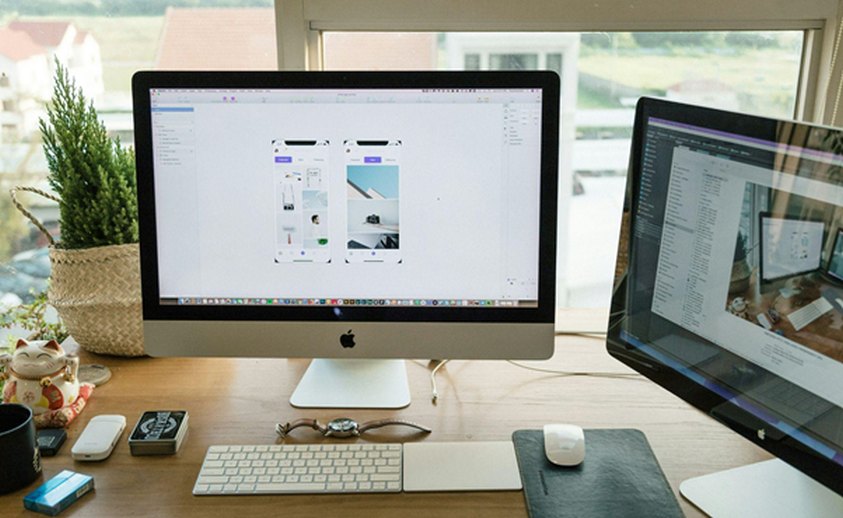Transform Your Business with Professional UI/UX Design Services for Maximum Impact

Apps that download for more than 5 seconds simply do not survive. Quick information entry, transaction optimization, and all platform accessibility—this is just a short list of the required features. But where can you get all of this?
In this article, we will explore how UI UX design services can lead your digital project to success. We review the key benefits of professional UI/UX design and find out how to choose the right design partner.
Why Do Businesses Hunt for UX Designers?
Every dollar invested in professional UI/UX design results in $100. If you wonder how it’s possible to achieve such a result, we’ve compiled a table of benefits.
Below is a table highlighting the key benefits of UI/UX design:
| Benefits | Description |
| Increased ROI | A better user experience leads to higher customer satisfaction. Thus, you get loyalty, which drives revenue. |
| Increased conversion rates | Intuitive and engaging designs improve the likelihood of users completing desired actions, boosting sales. |
| Improved SEO | Better user experiences and faster load times positively impact search engine rankings. |
| Higher rate of user growth | A clear interface attracts new users and retains existing ones. Hence, it fosters growth. |
| Higher user retention | Consistent and enjoyable user experiences encourage repeat interactions and long-term engagement. |
| Brand consistency | A professional design approach guarantees a cohesive brand identity. It strengthens brand recognition and trust. |
UI/UX design for business drives measurable business outcomes, making it an essential investment.
What Goes Into UI/UX Design Services
UI/UX design services encompass a range of activities. These activities are crucial to creating functional and aesthetically pleasing products.
Key Elements of UI/UX Design Services:
- Strategy. The stage starts off with an analysis of user needs and pain points. The team looks for a spot that meets the company’s business objectives.
- Structure. Understanding customer behaviors and flows helps create intuitive navigation and interaction patterns.
- Consistent user design. This step focuses on the aesthetic aspects of the interface: visual elements, color schemes, typography, and layout. The goal is to create an interface that aligns with the brand’s identity.
By focusing on responsive design, businesses can ensure their digital products provide a seamless and enjoyable user experience across all devices.
UI vs. UX: What’s the Difference?
Using UI and UX interchangeably is possible in some contexts. Moreover, designers who are engaged in user experience design also do user interface design. Still, we’ve created a table that highlights the differences:
| Aspect | UI (User Interface) | UX (User Experience) |
| Focus | Visual design elements, such as buttons, icons, and layout | Overall feel of the experience, including usability and flow |
| Objective | Create visually appealing and consistent interfaces | Enhance overall satisfaction by improving usability and interaction |
| Tools | Sketch, Figma, and Adobe XD | Usability testing, wireframing, and prototyping tools |
| Key activities | Visual design, branding, and responsiveness | User research, journey mapping, and usability testing |
Both approaches are important for making a successful mobile application. But they address different aspects of how people experience a product.
Here’s an example. Imagine designing a restaurant. UX design would be like considering the overall dining experience. Is it easy to get a reservation? How comfortable is the seating? UI design would be designing the menus, table settings, and restaurant layout.
All the aspects are important, but only a combination of them gives a full picture.
How to Choose Your Vendor of UI/UX Design for Business

Source: Unsplash
Choosing the right UI/UX design partner is critical for achieving the desired outcomes. Here are the key factors to consider:
Portfolio
First of all, review the provider’s portfolio. You need to see what these guys are capable of and if their style aligns with your brand. Look for a diverse portfolio; various projects indicate versatility and expertise.
Reviews and Past Experience
Check client reviews and case studies to understand the provider’s track record. Past experiences with similar projects can give insights into their ability to handle your requirements.
Pricing
Consider the pricing structure and ensure it aligns with your budget. Transparent pricing without hidden costs is essential for maintaining a smooth partnership.
Workflow and Communication Skills
It is challenging to evaluate somebody’s communication skills before you start an actual partnership. However, there are some methods you can employ:
- Pay attention to their clarity, conciseness, and active listening skills during your initial discussions. Do they articulate their ideas effectively? Do they ask clarifying questions to understand your perspective?
- Ask about their typical workflow—how they manage tasks, prioritize deadlines, and handle revisions.
- If feasible, provide a small sample task relevant to the project and see how they approach it.
- Engage in a detailed discussion about the project scope. This reveals their ability to understand requirements and communicate possible challenges.
For sure, these are not direct instructions but rather advice. However, our experience shows that these tips really help in the search for a good designer.
The Bottom Line
Investing in professional UI/UX design services is a strategic move. We’ve seen hundreds of cases of how UX transforms businesses. That’s why we encourage small businesses and startups to pay extra attention to design. The amount of time and money that you’ve spent pays off a million times! What is more, this step will lay the groundwork for further business development.

